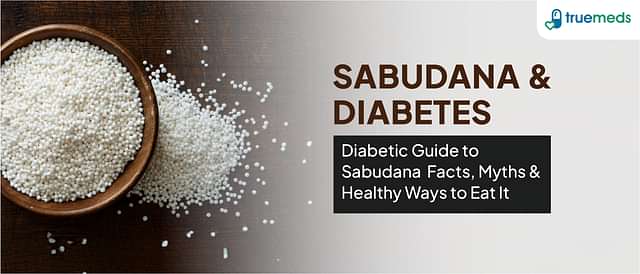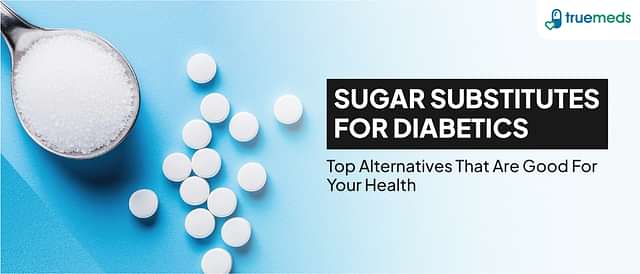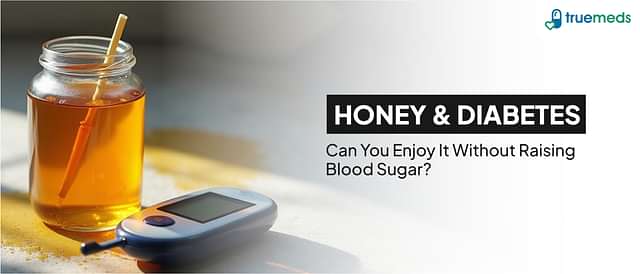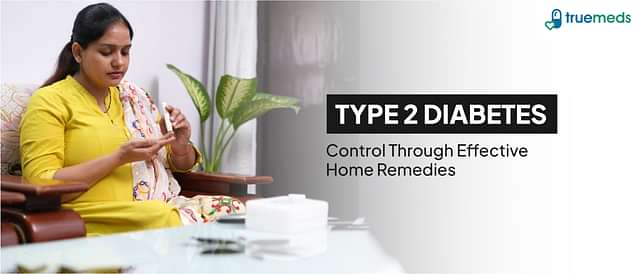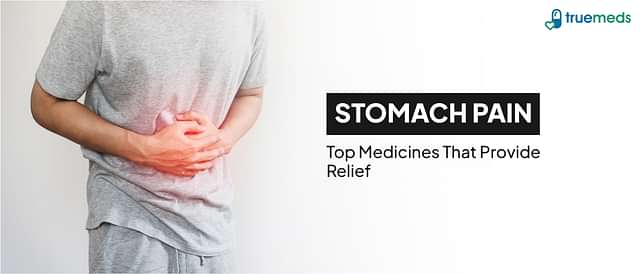Type 2 Diabetes Causes, Symptoms and Treatment
Last updated on : 17 Mar, 2025
Read time : 14 min
Diabetes type 2 is characterised by a disturbance in the mechanisms by which the body controls and utilises sugar (also known as glucose) as energy. A deficiency of insulin causes blood sugar levels to increase continuously. High blood sugar usually causes cardiovascular, neurological, and immune system disorders. Two primary problems arise in type 2 diabetes, and they are connected. When you don’t have enough of the hormone insulin, which controls how much sugar is taken up by cells, your cells do not even react well to insulin, so they carry in less glucose. Diabetes type 2 was once known as adult-onset diabetes; however, both type 1 and type 2 diabetes can start at any point in a person’s life, including childhood and adulthood. Type 2 diabetes has always been more common in older people, but the rise in childhood obesity has caused some younger people to get it more often.
Type 2 diabetes may be controlled with lifestyle changes such as dieting and exercise, but presently there is no effective cure. If a healthy diet and regular exercise aren’t enough to keep your blood sugar levels stable, you may need diabetes medicines or insulin treatment.
Different types of Diabetes mellitus include:
- Type 1 diabetes mellitus: Diabetes type 1 is an autoimmune condition in which the body mistakenly targets healthy cells. In this condition, your pancreatic cells that generate insulin are destroyed. In most cases, the condition is identified in young people and children.
- Type 2 diabetes mellitus: Diabetes type 2 is characterised by either an insufficient supply of insulin in the body or abnormal sensitivity to insulin by the cells of the affected individual’s body. The majority of people with diabetes have this type of diabetes. It’s estimated that up to 95% of patients have type 2 diabetes. Those in their forties and older appear to be more vulnerable. It is also known as insulin resistance or adult-onset diabetes.
- Prediabetes: The condition known as prediabetes is the stage that comes before diabetes type 2. Your levels of blood glucose are higher than usual, but they’re not yet high enough to diagnose you with type 2 diabetes.
- Gestational diabetes: Sometimes, pregnant women may develop a form of diabetes called gestational diabetes. In most cases, diabetes that developed during pregnancy resolves after the mother has given birth. However, having gestational diabetes increases your risk of getting Type 2 diabetes in the future.
The following are some examples of rare types of diabetes:
- Monogenic diabetes syndromes: One in every 100 people who have diabetes has a type of medical condition called monogenic diabetes. Neonatal diabetes and juvenile-onset diabetes are two such cases.
- Cystic fibrosis-related diabetes -Diabetes caused by cystic fibrosis is a type of diabetes that only affects people with cystic fibrosis, a genetic disorder.
- Diabetes caused by a drug or chemical: Type 2 diabetes caused by a drug or chemical is common after an organ transplant, during treatment for HIV/AIDS, and when glucocorticoids are used.
What is diabetes type 2?
Diabetes type 2 is a condition in which the body is unable to make proper use of the glucose that is produced from meals. Insulin, a hormone produced by the pancreas, aids in the more efficient utilisation of glucose (sugar) by your cells. However, when people are older, the pancreas secretes less insulin, and your cells become more sensitive to its effects. Due to this, you’ll experience an excessive accumulation of sugar in your blood. The increased levels of blood sugar are characterised by Type 2 diabetes, which may cause a variety of serious health issues, including heart disease, stroke, and even death.
How does type 2 diabetes affect people?
Type 2 diabetes is the most common type of the disease, and its primary cause is high blood sugar (also known as glucose). As a consequence of this condition that continues for a long time (chronic), glucose accumulates in the circulation. High blood sugar levels are linked to a higher risk of cardiovascular disease, neurological disorders, and autoimmune disorders. The two main causes of type 2 diabetes are both interconnected and complex. Low blood sugar happens when the cells of the body don’t take in enough glucose because the pancreas isn’t making enough insulin.
Type 2 diabetes mellitus was formerly known as adult-onset diabetes; however, both type 1 and type 2 diabetes may develop at any age. As the number of overweight children and teenagers continues to rise, increasing numbers of young people are being diagnosed with type 2 diabetes.
Risk factors for type 2 diabetes:
The following factors may raise your chance of developing type 2 diabetes:
- Lethargy: Less physical activity increases susceptibility. Regular exercise may help with weight loss by reducing the amount of glucose in the blood, increasing the amount of energy burned, and making insulin work better.
- Weight: The primary risk factor is being overweight or obese.
- Distribution of fat: Having a higher percentage of body fat stored in the belly as compared to the hips and thighs is a warning sign. For both men and women, having a body composed of more than 40 inches (101.6 cm) raises the risk that you will get diabetes type 2.
- Regarding race and ethnicity, no one knows why people of color, especially blacks, Hispanics, Native Americans, Asians, and Pacific Islanders, are more likely to get type 2 diabetes than whites.
- Family background: If one of your parents or one of your siblings has type 2 diabetes, your chance of developing the condition is increased.
- Lipoprotein concentration in the blood: Low levels of high-density lipoprotein (HDL) cholesterol, or “good” cholesterol, and high levels of triglycerides are both linked to an increased risk of cardiovascular disease. To manage this risk, it’s important to consult a list of foods to avoid with high triglycerides.
- Age: As you become older, specifically beyond the age of 45, your chance of developing type 2 diabetes rises.
- Prediabetes: When your blood sugar levels are higher than usual but not high enough to be identified as diabetes, you are considered to have prediabetes. If treatment is not taken for prediabetes, it frequently leads to the development of type 2 diabetes.
- Risk factors for pregnancy: If you had gestational diabetes while you were pregnant or if your baby weighed more than 4 kilogrammes (9 pounds), you are more likely to get type 2 diabetes later in life.
- Ovarian polycystic syndrome: Polycystic ovarian syndrome is characterised by irregular periods, too much hair growth, and being overweight. It also makes it more likely that a person will get diabetes.
- Darker patches of skin, most commonly visible on the neck and armpits: This condition is mostly related to increased insulin resistance.
Symptoms of Type 2 Diabetes:
Type 2 diabetes symptoms usually develop over a prolonged period of time. In actuality, type 2 diabetes may be present for years without symptoms. Here are some possible signs and symptoms:
- having an extreme thirst.
- a tendency to pee constantly.
- The vision is weakened.
- weakness or numbness in the legs.
- Drowsiness.
- Untreated wounds.
- Constant fungal infections
- Feeling hungry.
- Rapid fat loss with no effort
- getting infected with a different disease.
Type 2 diabetes symptoms can appear gradually over several years and be so subtle that you aren’t aware that you have the disease. In many cases, there are no obvious signs of type 2 diabetes symptoms at all. People with diabetes might not know they have it until they have health problems caused by it, like vision problems or heart disease.
Cause of type 2 diabetes:
To regulate blood sugar levels, the pancreas secretes a hormone called insulin. It plays an important role in the transformation of glucose, a molecule that can be present in food, into energy so your cells can make use of it. People with type 2 diabetes mellitus have insulin produced by their pancreas; however, this insulin is not used by the cells.
Type 2 diabetes is typically caused by a variety of factors. In some cases, these factors may include:
- Genes: The secretion of insulin is controlled by a variety of different genetic factors.
- Insulin resistance has been linked to having too much weight, especially around the middle.
- Metabolic syndrome: Type 2 diabetes is characterised by metabolic syndrome, which includes increased glucose and lipid levels.
- An excess of glucose produced by the liver: If your blood sugar level lowers, your liver will start producing and releasing glucose. After consuming a large number of calories, the liver is better able to absorb and store glucose for further use. However, it is not absorbed by the livers of most people. Additionally, they will continue to produce sugar.
- Ineffective communication between the cells: Miscommunication takes place when cells are unable to properly receive or relay information. Diabetes can be caused by a number of conditions that make it hard for cells to use insulin and process glucose.
- Damaged beta cells: damaged insulin-producing cells (beta cells) may lead to irregular blood sugar levels by secreting either too much or too little insulin at improper times. Too much sugar in the blood may potentially harm these cells.
Diagnosis of type 2 diabetes:
Your doctor may diagnose diabetes with the following blood tests
Glycosylated haemoglobin testing (A1c):
Type 2 diabetes is mostly diagnosed with the glycated haemoglobin (A1C) test. The fasting oral glucose tolerance test is used to measure how much sugar is in the blood over a period of two to three months.
Based on the report’s results, the following is indicated:
- The average value is below 5.7 percent.
- Approximately 5.7% to 6.4% of the population have prediabetes.
- Two readings of 6.5% or higher after independent testing are evidence of diabetes.
Blood sugar test after fasting:
A blood sample is collected in the morning after a good night’s sleep. The results should be considered as follows:
- Normal plasma glucose levels are below 100 mg/dL (5.6 mmol/L).
- According to the American Diabetes Association, prediabetes is defined as a blood glucose level between 100 and 125 mg/dL (5.6 and 6.9 mmol/L).
- Diabetes is confirmed when the blood sugar level is 126 mg/dL (7 mmol/L) or higher on two separate occasions.
Oral glucose tolerance testing:
In comparison to the other tests, this is used very rarely during pregnancy. In the morning, you’ll need to consume sugary drinks in the doctor’s office after fasting all night. The patient’s blood sugar will be tracked for the following two hours. The results should be interpreted as follows, depending on the information found:
- Cholesterol levels below 140 mg/dL (7.8 mmol/L) are considered normal.
- Blood sugar levels in the pre-diabetic range are between 140 and 199 mg/dL (7.8 and 11.0 mmol/L).
- Diabetes is typically diagnosed when blood sugar levels are above 200 mg/dL (11.1 mmol/L) for more than two hours.
Random plasma glucose test:
The patient doesn’t have to fast before this lab test, so it can be done whenever it’s possible.
Treatment of type 2 diabetes:
1) Medications:
Some people with type 2 diabetes mellitus may keep the disease under control by making modest adjustments to their diet and lifestyle. If that is unsuccessful, there are several medication treatments. There are numerous different drugs in this group.
- Metformin: It may also improve insulin sensitivity and lower blood sugar levels. This is the standard first medication for most patients with type 2 diabetes mellitus.
- Sulfonylureas: If your body needs more insulin, you can get it by taking medicines that help it make more insulin.
- Meglitinides: Type 2 diabetes is treated rapidly and temporarily with insulin-stimulating medications like these.
- Thiazolidinediones: As a direct result of this, your insulin sensitivity will improve over time.
- Dipeptidyl peptidase-4 (DPP-4) inhibitors: These medications have a lower overall effect on reducing blood sugar levels.
- Glucagon-like peptide-1 agonists: These are medicines that are injected into a vein to make you feel less hungry and lower your blood sugar.
- Sodium-glucose cotransporter-2 (SGLT2) inhibitors: These help your kidneys flush excess sugar out of your system when you urinate.
2) Lifestyle modifications:
Diet and exercise alone may be sufficient to help you achieve your blood sugar goals.
Getting fit: If you’re overweight, losing weight may benefit you. Although a weight loss of 5 percent or less is impressive, experts believe that dropping at least 7 percent of your body fat and keeping it off is best. So, if you weigh 180 pounds, you may lower your blood sugar by dropping only 13 pounds. Although losing weight may seem impossible at first, focusing on food management and eating healthily is a good place to start.
To maintain excellent health, eat a varied and balanced diet that includes: If you have type 2 diabetes, there is no special diet you need to follow. If you want to learn more about carbohydrates and create a sustainable meal plan, consulting with a professional dietician is a good place to start.
- Food limitation.
- Reduce your consumption of sugar and other processed carbohydrates.
- Increasing your consumption of plant-based foods, such as vegetables and fruits,
- Increase your fibre intake.
Start exercising: You should aim for 30 to 60 minutes of exercise daily. Any activity that raises your heart rate, such as walking, bicycling, or swimming, will work. Mix in some strength exercises, like yoga or lifting weights. Take a meal when you go to the gym if you take medicine that decreases your blood sugar.
Manage your blood sugar levels: Your doctor will inform you whether or not you need to test your blood sugar levels and how regularly you should do so based on the therapy that you are currently getting, especially if you are taking insulin. For more details on the hormones involved, read our article on insulin and glucagon function.
Prevention of type 2 diabetes:
If you want to prevent having type 2 diabetes, a healthy lifestyle is always your best opportunity, especially if you have a family history of the condition. If you have prediabetes, making changes to your life may slow or stop the start of diabetes.
The following are some aspects of a healthy way of life:
- Lose some weight: Reduce your body mass index (BMI) by 7–10% and you will significantly lower your risk of developing type 2 diabetes. To better understand your BMI and how it impacts your health, check out our article on the BMI chart for men.
- Participate in some physical activity: Just 30 minutes of fast walking every day may reduce your risk by roughly half, so get moving!
- Maintain a well-balanced diet: Adopt a healthy diet by limiting your intake of processed foods, sugary beverages, trans fats, and saturated fats. The consumption of processed and red meats should be restricted.
- Stop smoking: If you’re trying to solve one condition by stopping cigarettes, consulting your doctor to discuss how to avoid gaining weight in its place is a good idea.
Conclusion:
Close diabetes monitoring is especially crucial during illness. A simple cold may be deadly if it develops insulin sensitivity and high blood sugar levels. People with type 2 diabetes don’t produce enough insulin, so their bodies don’t digest glucose properly. Your blood sugar (also known as glucose) levels rise. Having high blood sugar levels is harmful. However, type 2 diabetes may be controlled. Maintaining a healthy blood sugar level necessitates a combination of regular activity and a nutritious diet. There’s a chance you’ll require medicine or insulin, too. If you have Type 2 diabetes, talk to your doctor often and check your blood sugar levels at home on a regular basis.
All of the aforementioned drugs should be used only when prescribed by a doctor. If you want to buy these medications, please visit the pharmacist at the nearest drugstore. If you are searching for home delivery, a discount offer, or monthly savings on your bill, or if the pharmacy cannot provide the medications you want, you may also use an online platform like Truemeds. Our online pharmacy, Truemeds, provides the highest-quality medications at the lowest prices. We provide all varieties of medications, including branded, over-the-counter, and nutritional supplements, as well as generic medicines online at an affordable price. With free home delivery, you may save up to 72% when you purchase medications online from Truemeds.
Disclaimer
Our healthcare experts have carefully reviewed and compiled the information presented here to ensure accuracy and trustworthiness. It is important to note that this information serves as a general overview of the topic and is for informational purposes only. It is not intended to diagnose, prevent, or cure any health problem. This page does not establish a doctor-patient relationship, nor does it replace the advice or consultation of a registered medical practitioner. We recommend seeking guidance from your registered medical practitioner for any questions or concerns regarding your medical condition.
Popular Articles
Recommended Articles
Recent Articles
Top-Selling Medicines:
...View more
Top-Selling OTC:
...View more
Subscribe
Registered Office Address
Grievance Officer
Download Truemeds

Contact Us
Our customer representative team is available 7 days a week from 9 am - 9 pm.
v3.7.5
Our Payment Partners










